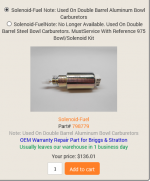You are using an out of date browser. It may not display this or other websites correctly.
You should upgrade or use an alternative browser.
You should upgrade or use an alternative browser.
Export thread
Fuel solenoid new vs. original questions - JD LA150 w/ Briggs Intek
#1
G
Gumby83
G
Gumby83
Ok so during my tear down project this past winter (update to that thread coming soon), I've managed to misplace the fuel shutoff solenoid. And by misplace, I mean lose. I'm pretty sure those are synonymous, for me at least... 
Anyway I've been looking for a replacement and I'm just not sure what replacement is actually correct.
Briggs numbers are 445877-0130-E1 (also has 3rd number if it matters - 070129YG).
According to their parts diagrams, the correct replacement is part# 798779, however this is a different design than what was originally on my engine. The original was a 90* design whereas the replacement is straight with no angles. I know the design itself doesn't affect operation, but I'm not sure there's enough clearance between the carb and engine for the straight design to fit. See pics below for clarity.
Thank you.
NOTE: These are just random photos of the design differences and are not exact matches to the part numbers...
ORIGINAL
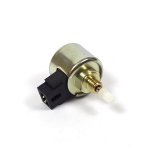
REPLACEMENT
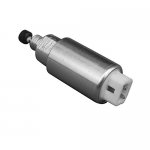
Anyway I've been looking for a replacement and I'm just not sure what replacement is actually correct.
Briggs numbers are 445877-0130-E1 (also has 3rd number if it matters - 070129YG).
According to their parts diagrams, the correct replacement is part# 798779, however this is a different design than what was originally on my engine. The original was a 90* design whereas the replacement is straight with no angles. I know the design itself doesn't affect operation, but I'm not sure there's enough clearance between the carb and engine for the straight design to fit. See pics below for clarity.
Thank you.
NOTE: These are just random photos of the design differences and are not exact matches to the part numbers...
ORIGINAL

REPLACEMENT

#2
S
slomo
S
slomo
Put a small bolt of the same threads in there. Get a copper flat washer and some teflon tape on the threads. Never have a starting issue again. If you do this, drop the revs down to IDLE before turning off the ignition. Problem solved.
slomo
slomo
#4

StarTech
The solenoid you got is not the 798779 solenoid but is aftermarket or incorrectly shipped OEM solenoid.
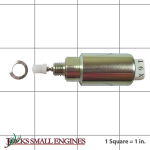
StarTech
Just another rig job.Put a small bolt of the same threads in there. Get a copper flat washer and some teflon tape on the threads. Never have a starting issue again. If you do this, drop the revs down to IDLE before turning off the ignition. Problem solved.
slomo
The solenoid you got is not the 798779 solenoid but is aftermarket or incorrectly shipped OEM solenoid.

#5

StarTech
StarTech
But at least the steel bowl has been superseded to 798778 which includes the 798779 solenoid is actually cheaper than the solenoid alone.View attachment 55826
The one used on Steel bowl carbs is No longer made.
#6
G
Gumby83
G
Gumby83
So just after posting that, I answered my own question.  I was going to delete this thread.
I was going to delete this thread.
But after reading your responses (thanks, by the way), I realize that I didn’t state my concern/question very clearly. I was concerned about the area the solenoid occupies when mounted on the carb and engine - I didn’t think there was enough room for the new solenoid to actually fit between the carb and engine.
I remembered I still have all the pics of the tear down (great way for the parts to go back where they belong) so I started searching through them and found my answer.
My recollection was that the solenoid faced about another 90* to the left and resided in that pit of death looking area.
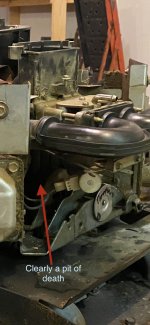
But as you can see, my recollection was falsified.
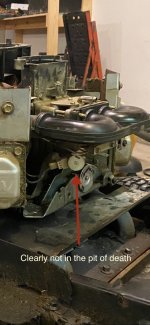
So there wasn’t any problem to begin with - I’ve still gotta work on that whole patience thing.
Thanks! ?
But after reading your responses (thanks, by the way), I realize that I didn’t state my concern/question very clearly. I was concerned about the area the solenoid occupies when mounted on the carb and engine - I didn’t think there was enough room for the new solenoid to actually fit between the carb and engine.
I remembered I still have all the pics of the tear down (great way for the parts to go back where they belong) so I started searching through them and found my answer.
My recollection was that the solenoid faced about another 90* to the left and resided in that pit of death looking area.

But as you can see, my recollection was falsified.

So there wasn’t any problem to begin with - I’ve still gotta work on that whole patience thing.
Thanks! ?
#8

StarTech
StarTech
Still the new solenoid you have is an incorrect one. It is one use on most vertical engine carburetors. When install these long type solenoids you will sometime have to extend the wiring harness.
#9
G
Gumby83
I didn’t get the replacement yet - the pics in my first post were just random photos I googled to show the difference in design. I’m planning to order the Briggs replacement today.
Thanks.
G
Gumby83
Still the new solenoid you have is an incorrect one. It is one use on most vertical engine carburetors. When install these long type solenoids you will sometime have to extend the wiring harness.
I didn’t get the replacement yet - the pics in my first post were just random photos I googled to show the difference in design. I’m planning to order the Briggs replacement today.
Thanks.
#10
B
Born2Mow
B
Born2Mow
The problem is 2 fold:
1) The fuel tank is ABOVE the carb. Therefore GRAVITY (which has not been turned off in a LONG time) will always be trying (yes, even while you sleep) to push gasoline into the engine oil... where it can ruin your fine engine. So you DO NEED a fuel shut off. This is because you are not fighting "fuel", you are battling "GRAVITY". And gravity doesn't give up.
2) You really cannot trust the automatic fuel shutoffs because most of them give no external indication of their ON or OFF condition. You may have one, but is it really working ? You won't know until you see oil flooding out the muffler, and by then it's too late.
The only thing you can trust is the manual fuel shut off. You control OFF and you control ON. And the valve gives a visible indication of that status. Adding a manual fuel shut off in the fuel line just before the carb will cost between $6 and $8 at any store or on-line dealer that sells power equipment. They look like this....

Hope this helps.
1) The fuel tank is ABOVE the carb. Therefore GRAVITY (which has not been turned off in a LONG time) will always be trying (yes, even while you sleep) to push gasoline into the engine oil... where it can ruin your fine engine. So you DO NEED a fuel shut off. This is because you are not fighting "fuel", you are battling "GRAVITY". And gravity doesn't give up.
2) You really cannot trust the automatic fuel shutoffs because most of them give no external indication of their ON or OFF condition. You may have one, but is it really working ? You won't know until you see oil flooding out the muffler, and by then it's too late.
The only thing you can trust is the manual fuel shut off. You control OFF and you control ON. And the valve gives a visible indication of that status. Adding a manual fuel shut off in the fuel line just before the carb will cost between $6 and $8 at any store or on-line dealer that sells power equipment. They look like this....

Hope this helps.
#12
B
bertsmobile1
B
bertsmobile1
And before we get off track & confusion falls like summer rain.
A fuel solenoid does not cut off the supply of fuel to the carburettor as some brain dead ( did he have one in the first place ) moron posted on Face book a decade ago .
The carburettor solenoid just rams a plunger into the feed side of the main jet to stop fuel ENTERING THE CYLINDER during the shut down period where it would pass unburned into the engine then out the exhaust .
It is the float needle & seat that controls the fuel supply TO THE CARBURETTOR and it is a leaking float needle that will allow fuel to flood out of the carburettor & fill your engine via the float bowl vent , which by regulation from the same usless government body that gave us the carb solenoid in the first place
A fuel solenoid does not cut off the supply of fuel to the carburettor as some brain dead ( did he have one in the first place ) moron posted on Face book a decade ago .
The carburettor solenoid just rams a plunger into the feed side of the main jet to stop fuel ENTERING THE CYLINDER during the shut down period where it would pass unburned into the engine then out the exhaust .
It is the float needle & seat that controls the fuel supply TO THE CARBURETTOR and it is a leaking float needle that will allow fuel to flood out of the carburettor & fill your engine via the float bowl vent , which by regulation from the same usless government body that gave us the carb solenoid in the first place
#14
J
Joed756
J
Joed756
This is definitely the answer, I've done this several times. Also installing the shut-off near the carb, then when you are done mowing you can shut the valve and let the engine starve, thus assuring no leaks on your garage floor.The problem is 2 fold:
1) The fuel tank is ABOVE the carb. Therefore GRAVITY (which has not been turned off in a LONG time) will always be trying (yes, even while you sleep) to push gasoline into the engine oil... where it can ruin your fine engine. So you DO NEED a fuel shut off. This is because you are not fighting "fuel", you are battling "GRAVITY". And gravity doesn't give up.
2) You really cannot trust the automatic fuel shutoffs because most of them give no external indication of their ON or OFF condition. You may have one, but is it really working ? You won't know until you see oil flooding out the muffler, and by then it's too late.
The only thing you can trust is the manual fuel shut off. You control OFF and you control ON. And the valve gives a visible indication of that status. Adding a manual fuel shut off in the fuel line just before the carb will cost between $6 and $8 at any store or on-line dealer that sells power equipment. They look like this....

Hope this helps.
#15
S
slomo
Slomo
S
slomo
Tell them again. LOVE IT!!!!The problem is 2 fold:
1) The fuel tank is ABOVE the carb. Therefore GRAVITY (which has not been turned off in a LONG time) will always be trying (yes, even while you sleep) to push gasoline into the engine oil... where it can ruin your fine engine. So you DO NEED a fuel shut off. This is because you are not fighting "fuel", you are battling "GRAVITY". And gravity doesn't give up.
2) You really cannot trust the automatic fuel shutoffs because most of them give no external indication of their ON or OFF condition. You may have one, but is it really working ? You won't know until you see oil flooding out the muffler, and by then it's too late.
The only thing you can trust is the manual fuel shut off. You control OFF and you control ON. And the valve gives a visible indication of that status. Adding a manual fuel shut off in the fuel line just before the carb will cost between $6 and $8 at any store or on-line dealer that sells power equipment. They look like this....

Hope this helps.
Slomo
#16
S
slomo

slomo
S
slomo
Rig job? You know just like I do, those solenoids will fail in the future. Leaving most scratching their head on why their mower won't start. Rig job my arse LOL. Why would you or your customers spend money on a time bomb? Rig job.....Just another rig job.
The solenoid you got is not the 798779 solenoid but is aftermarket or incorrectly shipped OEM solenoid.
View attachment 55827
slomo
#17
S
slomo
And as our brother poster mentioned, you don't know if the sucker is working or not. COME ON MAN!!
slomo
S
slomo
Very possible. They only cost a buck or 2. Way less than that solenoid mess. You can buy a 10 pack of shutoffs on fleabay for cheap.Until the manual shut off leaks.....
And as our brother poster mentioned, you don't know if the sucker is working or not. COME ON MAN!!
slomo
#18
M
MadMopar
M
MadMopar
I accidently came across this post and I'm glad I did. I have a John ODeer LT166 that is not starting and I couldn't figure out why until I found a trouble shoot chart that mention this solenoid and found out it doesn't "click" when the system is powered. Tried to find a new solenoid or carb rebuild kit with it in it and they are no longer made.
I may try this plug and shutoff valve just to see if I can get the mower running again. I already have these shutoff valves (I put them on all my small engines to run them dry for winter storage).
Thanks for the tip about the "rig job". I was about to send it the parts/recycle graveyard. The mower was running fine until it just started running down and finally died while I was using it and will run if I shoot starter fluid down it's throat.
I may try this plug and shutoff valve just to see if I can get the mower running again. I already have these shutoff valves (I put them on all my small engines to run them dry for winter storage).
Thanks for the tip about the "rig job". I was about to send it the parts/recycle graveyard. The mower was running fine until it just started running down and finally died while I was using it and will run if I shoot starter fluid down it's throat.
#19
G
Gumby83
G
Gumby83
It’s interesting to see that some people talk of these solenoids as if they operate on some kind of sorcery. All you have to do is turn the key on and listen/feel for the solenoid to click - that’s how you know if it’s working. In its fundamental operation, it’s no different than the starter solenoid, or fuel injectors, or a basic relay.
And deleting it is hardly going to eliminate no starts - it’s only going to eliminate one possible cause of a no start. Basic diagnostic methods will lead to the solenoid sooner or later.
And deleting it is hardly going to eliminate no starts - it’s only going to eliminate one possible cause of a no start. Basic diagnostic methods will lead to the solenoid sooner or later.
#20
B
bertsmobile1
Please go back & re-read the entire post.
You are still confusing the role of the fuel solenoid.
I bought on of each when I got the repair run but quickly found that nearly every one that was stuck, could be cleaned up and made to work again by dripping solvent into the hole the plunger sits in and working it in & out manually
In the past 7 years I have serviced about 3000 engines and not replaced a single solenoid .
I fit taps to every mower that I service primarily to make carb servicing & or filter replacement easier for me.
I do tell people to turn it off & starve the engine which will leave the float bowl almost empty preventing evaporation of fuel gumming up the carb or water adsorbtion corroding the carb.
he other advantage is the last few cycles of the engine will be very lean which will tend to burn off any build up on the spark plug so the mower starts easier next time.
B
bertsmobile1
I accidently came across this post and I'm glad I did. I have a John ODeer LT166 that is not starting and I couldn't figure out why until I found a trouble shoot chart that mention this solenoid and found out it doesn't "click" when the system is powered. Tried to find a new solenoid or carb rebuild kit with it in it and they are no longer made.
I may try this plug and shutoff valve just to see if I can get the mower running again. I already have these shutoff valves (I put them on all my small engines to run them dry for winter storage).
Thanks for the tip about the "rig job". I was about to send it the parts/recycle graveyard. The mower was running fine until it just started running down and finally died while I was using it and will run if I shoot starter fluid down it's throat.
I accidently came across this post and I'm glad I did. I have a John ODeer LT166 that is not starting and I couldn't figure out why until I found a trouble shoot chart that mention this solenoid and found out it doesn't "click" when the system is powered. Tried to find a new solenoid or carb rebuild kit with it in it and they are no longer made.
I may try this plug and shutoff valve just to see if I can get the mower running again. I already have these shutoff valves (I put them on all my small engines to run them dry for winter storage).
Thanks for the tip about the "rig job". I was about to send it the parts/recycle graveyard. The mower was running fine until it just started running down and finally died while I was using it and will run if I shoot starter fluid down it's throat.
Please go back & re-read the entire post.
You are still confusing the role of the fuel solenoid.
I bought on of each when I got the repair run but quickly found that nearly every one that was stuck, could be cleaned up and made to work again by dripping solvent into the hole the plunger sits in and working it in & out manually
In the past 7 years I have serviced about 3000 engines and not replaced a single solenoid .
I fit taps to every mower that I service primarily to make carb servicing & or filter replacement easier for me.
I do tell people to turn it off & starve the engine which will leave the float bowl almost empty preventing evaporation of fuel gumming up the carb or water adsorbtion corroding the carb.
he other advantage is the last few cycles of the engine will be very lean which will tend to burn off any build up on the spark plug so the mower starts easier next time.
#21

icon2000
icon2000
Agree??Put a small bolt of the same threads in there. Get a copper flat washer and some teflon tape on the threads. Never have a starting issue again. If you do this, drop the revs down to IDLE before turning off the ignition. Problem solved.
slomo
#22
B
bertsmobile1
Despite them not being manditory in OZ , if one is fitted & I bypass it then $ 5,000 for the first offence , $ 20,000 for the second .
It is called interfearing with a pollution control device .
I do have a box of bowl nuts ( never could understand why a bowl bolt is called a nut , but there is a lot I don't understand ) that I use for the purpose of diagnosing
engine problems & I have had a few instances or the wires coming loose or shorting causing random misfires .
B
bertsmobile1
Private users can do this but mower shops can'tAgree??
Despite them not being manditory in OZ , if one is fitted & I bypass it then $ 5,000 for the first offence , $ 20,000 for the second .
It is called interfearing with a pollution control device .
I do have a box of bowl nuts ( never could understand why a bowl bolt is called a nut , but there is a lot I don't understand ) that I use for the purpose of diagnosing
engine problems & I have had a few instances or the wires coming loose or shorting causing random misfires .
#23

ILENGINE
ILENGINE
Legally they can't either. It carries a $3850 per day fine for the end user if caught. The chances of getting caught are about 0 but with the current administration that we have anything is possible. Also if one comes into the shop we are suppose to make it legal before releasing it to the customer at their expense. Carries a $38500 per day fine for the dealer just for having it in the shop.Private users can do this but mower shops can't
Despite them not being manditory in OZ , if one is fitted & I bypass it then $ 5,000 for the first offence , $ 20,000 for the second .
It is called interfearing with a pollution control device .
I do have a box of bowl nuts ( never could understand why a bowl bolt is called a nut , but there is a lot I don't understand ) that I use for the purpose of diagnosing
engine problems & I have had a few instances or the wires coming loose or shorting causing random misfires .
#24

StarTech
StarTech
Plus on some mowers they no longer kill the magneto but use the anti after-fire solenoid to shut down the engine. JD is OEM that doing this on some of their mowers. On those I have added the kill circuit back just as an additional safety device in case the solenoid fails to operate.
Actually understand why the screws are called bolts in the first place. I reckon it just that different industries have their own terminology for items.Anyway they are all fasteners in one way or the other.
Actually understand why the screws are called bolts in the first place. I reckon it just that different industries have their own terminology for items.Anyway they are all fasteners in one way or the other.
#25
G
Gumby83
I’m not saying this is the absolute reason for it, but I think it’s because many older carburetors utilized adjustment screws on the bottom of the bowls and would have to be secured with nuts. As technology and designs changed, the screws were replaced with bolts but the term didn’t change with it (whatever the reason).
G
Gumby83
I do have a box of bowl nuts ( never could understand why a bowl bolt is called a nut , but there is a lot I don't understand )
I’m not saying this is the absolute reason for it, but I think it’s because many older carburetors utilized adjustment screws on the bottom of the bowls and would have to be secured with nuts. As technology and designs changed, the screws were replaced with bolts but the term didn’t change with it (whatever the reason).
#26
B
bertsmobile1
B
bertsmobile1
Sounds reasonableI’m not saying this is the absolute reason for it, but I think it’s because many older carburetors utilized adjustment screws on the bottom of the bowls and would have to be secured with nuts. As technology and designs changed, the screws were replaced with bolts but the term didn’t change with it (whatever the reason).

